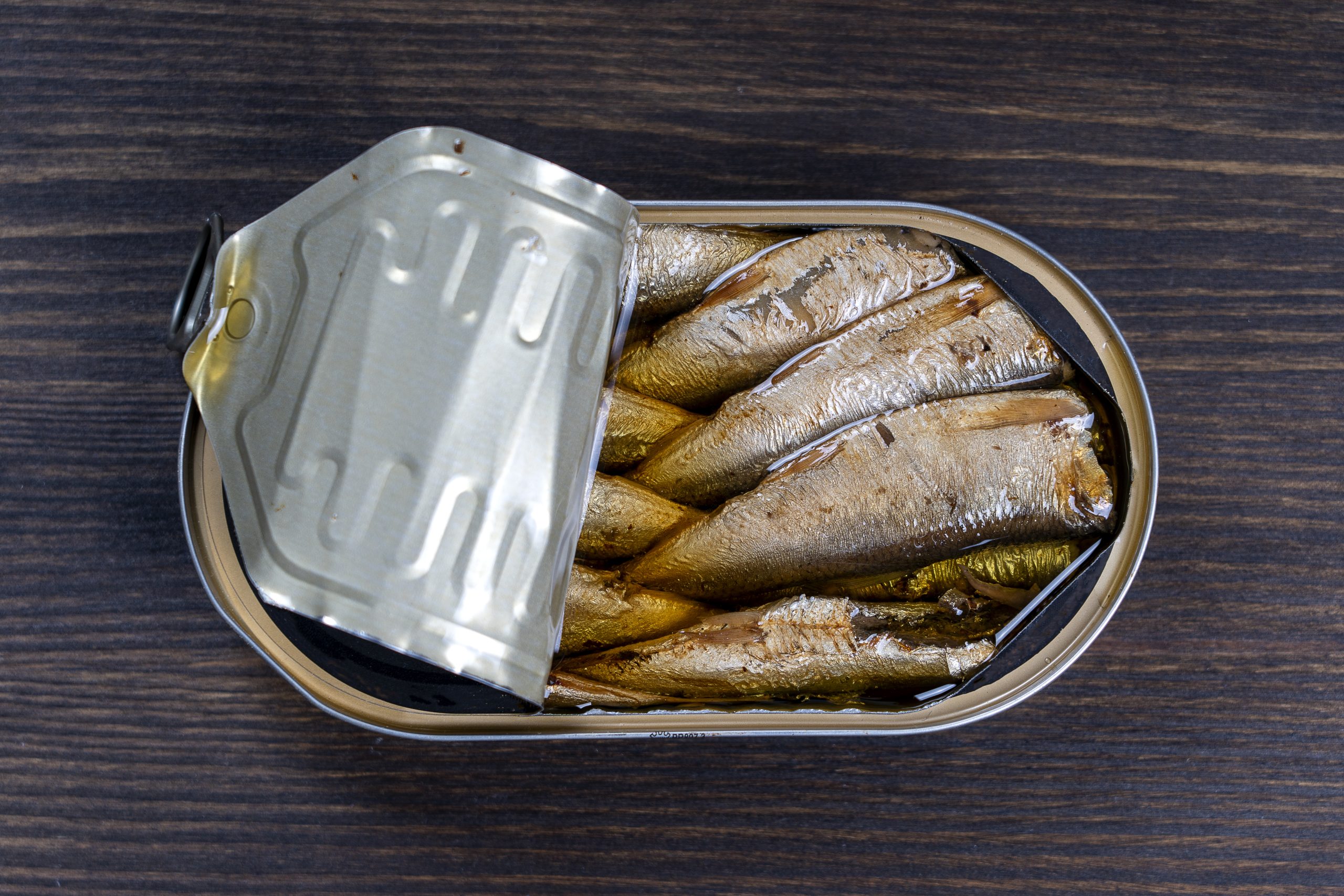Have you ever wondered about the preparation of tinned fish? It’s a question that many people ponder, and today we’re here to shed some light on the matter. Tinned fish, also referred to as conservas, is a popular delicacy in certain regions. As you crack open a can of these flavorful treats, you might find yourself contemplating whether the fish inside has been cooked or not. Well, get ready to uncover the truth behind this culinary enigma because we’re about to reveal if tinned fish is truly cooked or not. Get ready for a journey of exploration into the world of tinned fish and its intriguing preservation process.
What Is Tinned Fish?
Tinned fish is a preservation method that involves canning fish in oils and spices to enhance flavor and extend its shelf life. This technique has been used for centuries, particularly in Europe, where it is a staple in Mediterranean cuisine. Tinned fish is not only a pantry staple but also a versatile ingredient that can be used in a variety of recipes. From appetizers to main courses, tinned fish can add a unique flavor and texture to your dishes.
When it comes to tinned fish recipes, the options are endless. You can use tinned fish as a topping for toast, incorporate it into salads, or even create delicious pasta dishes. Tinned fish offers a convenient alternative to fresh fish, as it can be stored for a longer period of time without compromising its quality.
In Mediterranean cuisine, tinned fish plays a significant role. It is commonly used in dishes like salade Niçoise, where it adds a savory and briny flavor. Tinned fish is also popular in international cuisines, such as Spanish tapas and Portuguese bacalhau dishes.
Common Types of Tinned Fish
When exploring the world of tinned fish, it’s important to familiarize yourself with the common types available. Tinned fish comes in various varieties, each offering unique flavor profiles and culinary uses. Here are some of the most popular types:
| Type | Flavor Profile | Culinary Uses |
|---|---|---|
| Tinned Tuna | Mild and meaty | Ideal for salads, sandwiches, pasta dishes, and casseroles |
| Tinned Sardines | Rich and savory | Great for appetizers, pizza toppings, and pasta sauces |
| Tinned Salmon | Buttery and delicate | Perfect for salads, spreads, and as a substitute for fresh salmon |
These types of tinned fish can be cooked using various techniques such as grilling, baking, or pan-frying. They can also be enjoyed straight from the can, making them a convenient option for quick meals. Popular recipes using tinned fish include tuna salad, sardine toast, and salmon pasta. Apart from their culinary uses, tinned fish also offers health benefits. They are a good source of protein and omega-3 fatty acids, which are essential for heart health. So, whether you’re looking for a quick and nutritious meal or wanting to experiment with new flavors, tinned fish is a versatile ingredient to have in your pantry.
The Preservation Process of Tinned Fish
The preservation process of tinned fish involves canning the fish in oils and spices to maintain its flavor and quality over an extended period of time. Tinned fish is not raw, as it undergoes a cooking process during preservation. Here’s how tinned fish is preserved:
- Cleaning and preparation: The fish is first cleaned and prepared by removing scales, guts, and other undesirable parts.
- Canning: The cleaned fish is then packed into cans or jars along with oils, such as olive oil, and spices or herbs to enhance its flavor.
- Oils: Olive oil is commonly used to preserve tinned fish due to its ability to protect the fish from spoilage and maintain its texture.
- Spices and herbs: These are added to enhance the taste and aroma of the fish, providing a unique flavor profile.
The canning process involves sealing the cans or jars to create a hermetic seal, preventing air and bacteria from entering and causing spoilage. This process ensures that the fish remains safe to eat without cooking. The preserved tinned fish can be enjoyed straight from the can or used in various recipes, making it a convenient and versatile option for seafood lovers.
Can You Eat Tinned Fish Straight From the Can?
After learning about the preservation process of tinned fish, you may be wondering if it is safe to eat tinned fish straight from the can. The answer is yes, you can eat tinned fish straight from the can. Tinned fish is cooked during the canning process, which involves heating the fish to high temperatures to kill any bacteria or parasites that may be present. This ensures that the fish is safe to consume without further cooking.
There are many ways to enjoy tinned fish. You can simply eat it straight from the can as a quick and convenient snack. Alternatively, you can incorporate tinned fish into creative recipes such as smoked trout on toast with cottage cheese and fresh herbs, or a snacky spread on a plate with hummus, shaved raw carrots, and smoked trout, tuna, or salmon. There are also top brands of tinned fish, such as Fishwife, Tin Can Fish, and Minnow, that offer high-quality options for your enjoyment.
In addition to being safe to eat, tinned fish also provides health benefits. It is a portable source of protein and contains omega-3 fatty acids, which are beneficial for heart health. Tinned fish, especially oilier varieties like sardines and salmon, are among the highest sources of omega-3s in grocery stores. So, go ahead and enjoy tinned fish straight from the can or get creative with delicious recipes.
How to Cook With Tinned Fish
To cook with tinned fish, you have a wide range of options that allow you to create delicious and nutritious meals. Here are some cooking techniques, flavor pairings, and recipe inspirations to help you make the most of your tinned fish:
- Cooking Techniques:
- Use tinned fish as a topping for pizzas or flatbreads.
- Mix tinned fish into pasta dishes or risottos.
- Incorporate tinned fish into salads or grain bowls.
- Make fish cakes or fritters with tinned fish as the main ingredient.
- Flavor Pairings:
- Pair tuna with lemon, garlic, and herbs like parsley or dill.
- Combine sardines with tomatoes, olives, and capers for a Mediterranean flavor.
- Pair smoked trout with horseradish, cream cheese, and dill for a tangy and savory combination.
- Use anchovies to add depth of flavor to sauces, dressings, or marinades.
- Recipe Inspiration:
- Make a tuna and white bean salad with red onion, cherry tomatoes, and a lemon vinaigrette.
- Create a sardine and avocado toast with a squeeze of lemon juice and a sprinkle of chili flakes.
- Prepare a smoked trout and arugula salad with roasted beets, goat cheese, and a balsamic vinaigrette.
With these culinary uses, you can elevate your meals with tinned fish. The cooking time for tinned fish is minimal since it is already cooked and preserved. Experiment with different techniques and flavor combinations to discover your favorite ways to incorporate tinned fish into your cooking repertoire.
Nutritional Benefits of Tinned Fish
When considering the nutritional benefits of tinned fish, it is important to understand how this preserved food source can contribute to a healthy and balanced diet. Tinned fish offers numerous health benefits, making it a valuable addition to your meals. First and foremost, tinned fish is a rich source of high-quality protein, which is essential for building and repairing tissues in the body. It also contains omega-3 fatty acids, particularly in oilier varieties like sardines and salmon. These fatty acids have been shown to reduce inflammation, improve heart health, and support brain function. Tinned fish is also a good source of vitamins and minerals, including vitamin D, calcium, and potassium.
In terms of cooking techniques, tinned fish is incredibly versatile. It can be enjoyed straight from the can, added to salads, sandwiches, or pasta dishes, or used to create flavorful spreads and dips. Tinned fish recipes are quick and easy to prepare, making them ideal for busy individuals looking for convenient meal options.
When incorporating tinned fish into a balanced diet, it is important to consider portion sizes and the overall nutritional content of your meals. While tinned fish offers numerous health benefits, it is also higher in sodium compared to fresh fish. Therefore, it is advisable to choose low-sodium options or rinse the fish before consuming.
Safety Considerations for Tinned Fish
Safety considerations for tinned fish include ensuring proper storage and checking for signs of spoilage before consumption. It is important to be aware of the shelf life of tinned fish and to understand the health risks associated with consuming spoiled fish. Here are some key points to keep in mind:
- Proper storage: Store tinned fish in a cool, dry place away from direct sunlight. Avoid storing tins that are dented, bulging, or leaking, as these may indicate spoilage or contamination.
- Signs of spoilage: Before consuming tinned fish, inspect the can for any signs of damage or rust. If the fish smells off or has an unusual texture or color, it is best to discard it.
- Cooking techniques: While tinned fish is generally considered safe to eat straight from the can, cooking it can enhance the flavor and kill any potential bacteria. You can try pan-frying, grilling, or baking the fish for added taste and texture.
- Safe handling practices: When opening a can of tinned fish, be cautious of any sharp edges. Use clean utensils to remove the fish from the can and avoid cross-contamination with other foods.
Tips for Selecting and Storing Tinned Fish
Properly selecting and storing tinned fish is essential to ensure its quality and safety for consumption. When selecting tinned fish, there are several factors to consider. First, check the quality of the fish by looking for any signs of spoilage, such as bulging or dented cans, rust, or a foul smell. Higher-priced tinned fish options usually indicate better quality. Additionally, consider the type of oil used for preservation, as it can affect the flavor profile. Olive oil is often preferred for its rich taste. It is also important to prioritize sustainability by choosing tinned fish from responsible sourcing practices. Seek advice from knowledgeable sources like specialty stores or fishmongers to make an informed decision.
Once you have selected your tinned fish, it is important to store it properly to maintain its quality. Store tinned fish in a cool, dry place away from direct sunlight. Avoid storing it in high humidity areas, as this can lead to spoilage. After opening a can, transfer any unused fish to a separate container with a tight-fitting lid and refrigerate. Consume the fish within a few days to ensure its freshness.
Incorporating tinned fish into your meals can be a creative and sustainable choice. It provides a budget-friendly protein option and is considered a sustainable seafood choice due to the use of smaller fish lower on the food chain. Try using tinned fish in various recipes, such as salads, sandwiches, or pasta dishes, to add a unique flavor and texture. With proper selection, storage, and creativity in the kitchen, you can enjoy the benefits of tinned fish in a delicious and sustainable way.
| Selecting Tinned Fish: Factors to Consider | Storing Tinned Fish: Best Practices |
|---|---|
| Check for signs of spoilage | Store in a cool, dry place |
| Consider the type of oil used | Avoid high humidity areas |
| Look for higher-priced options | Transfer unused fish to a container |
| Prioritize sustainability | Refrigerate and consume within days |


